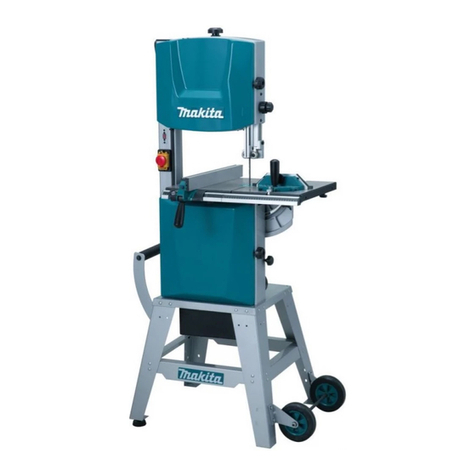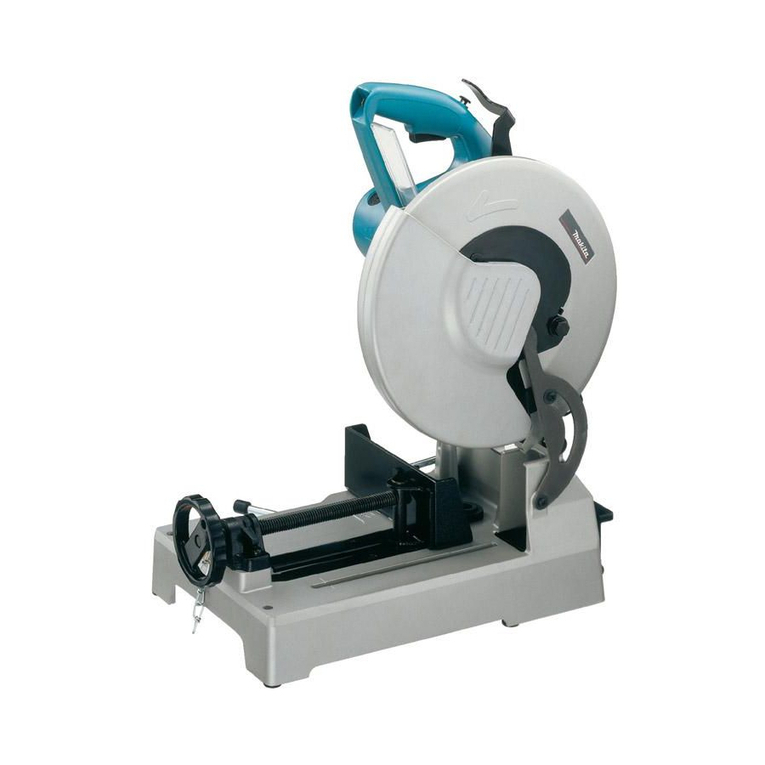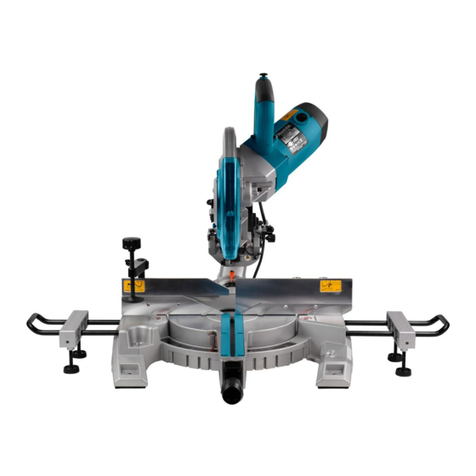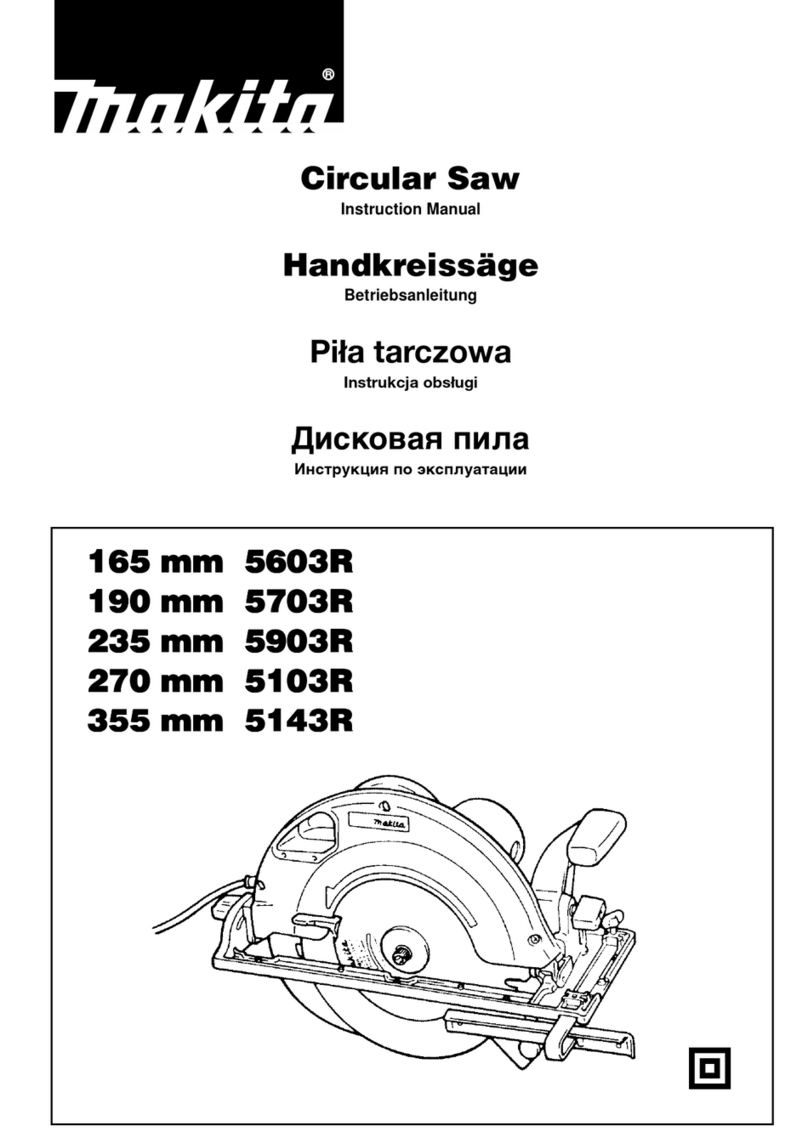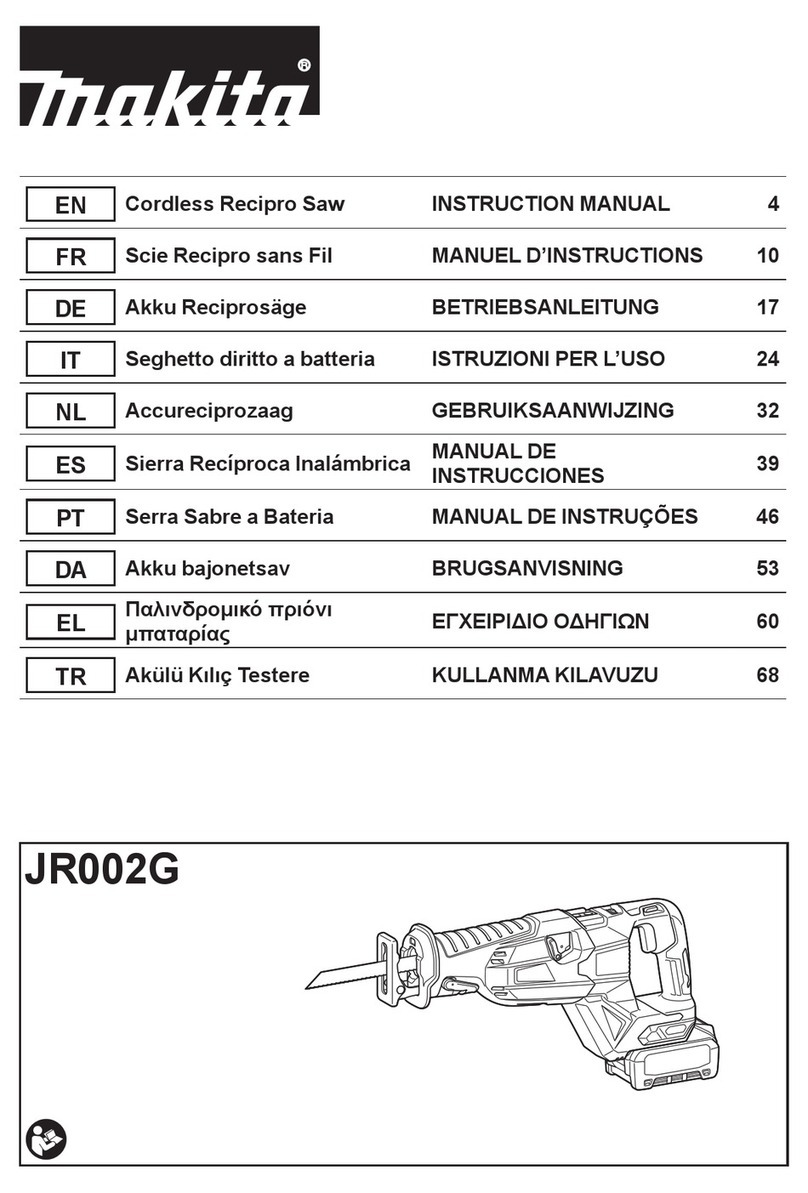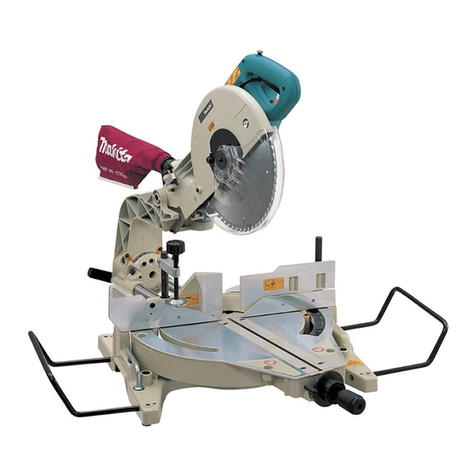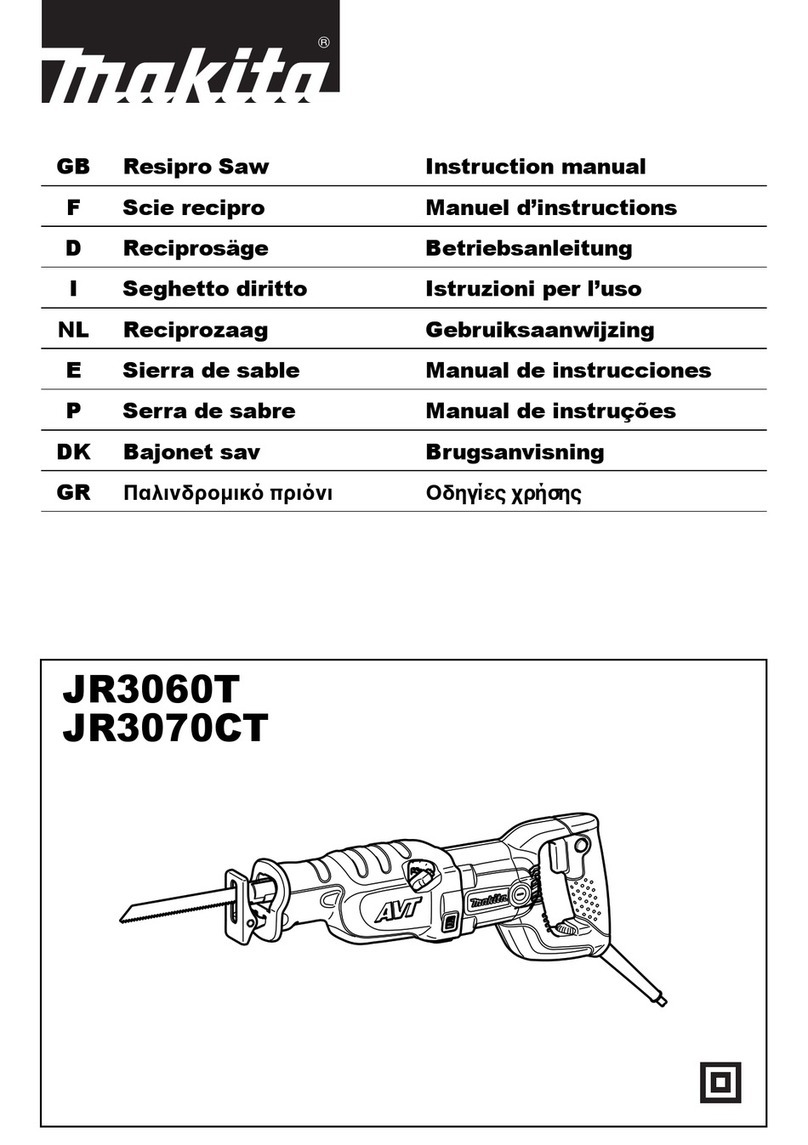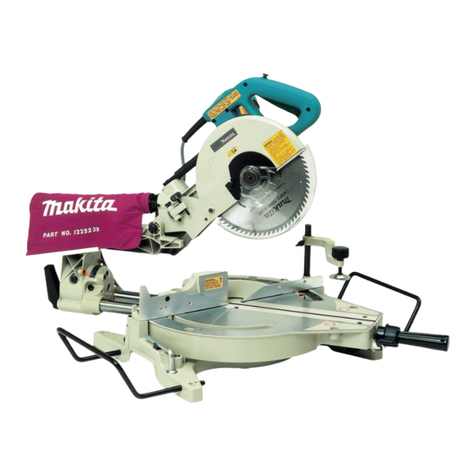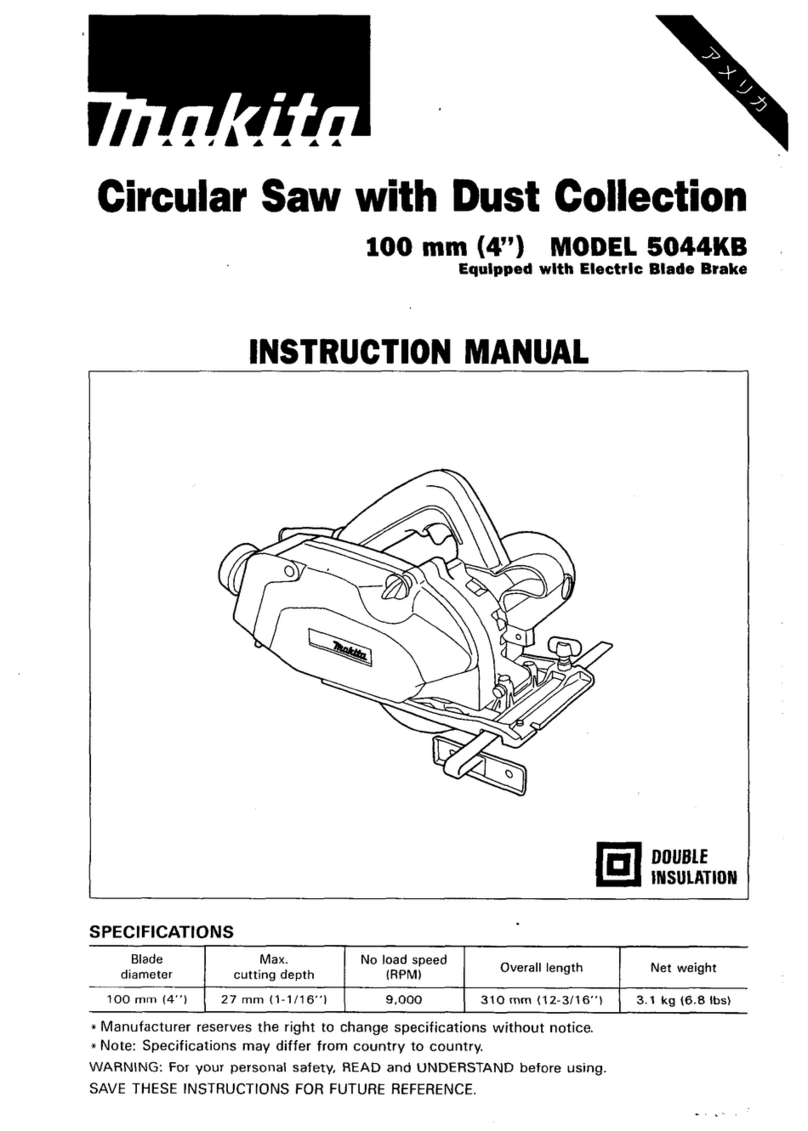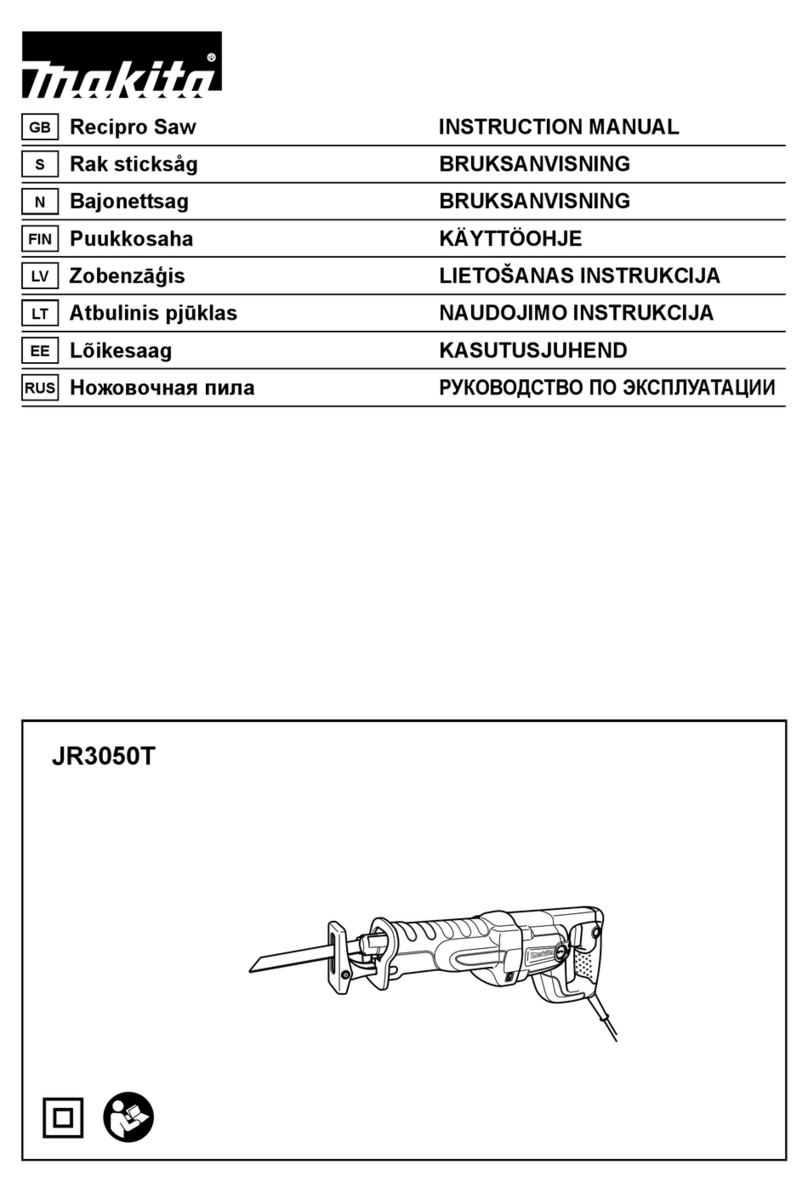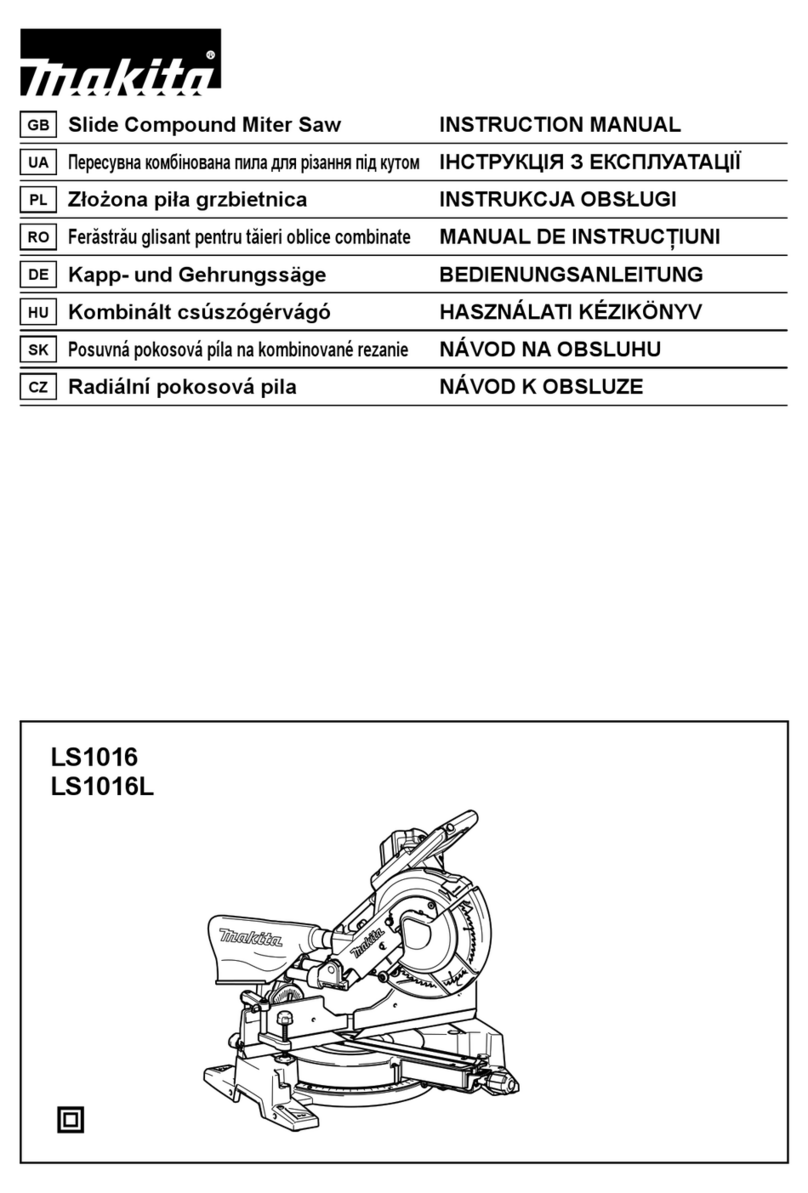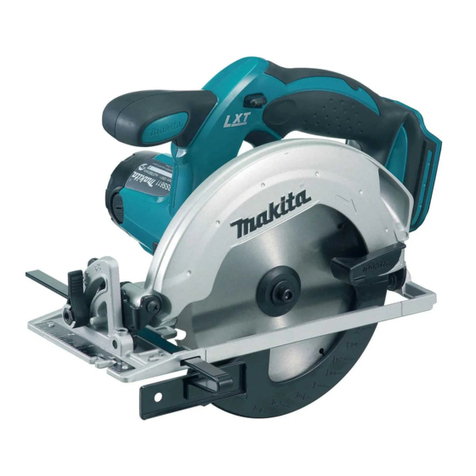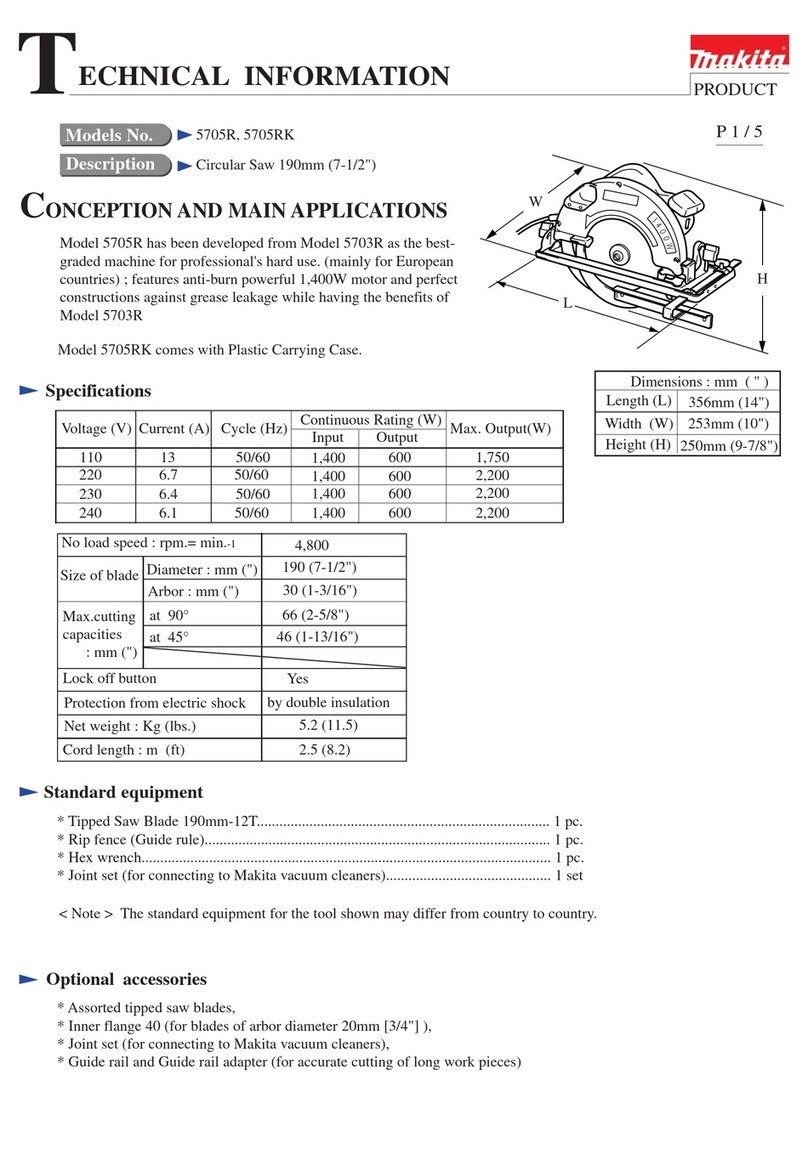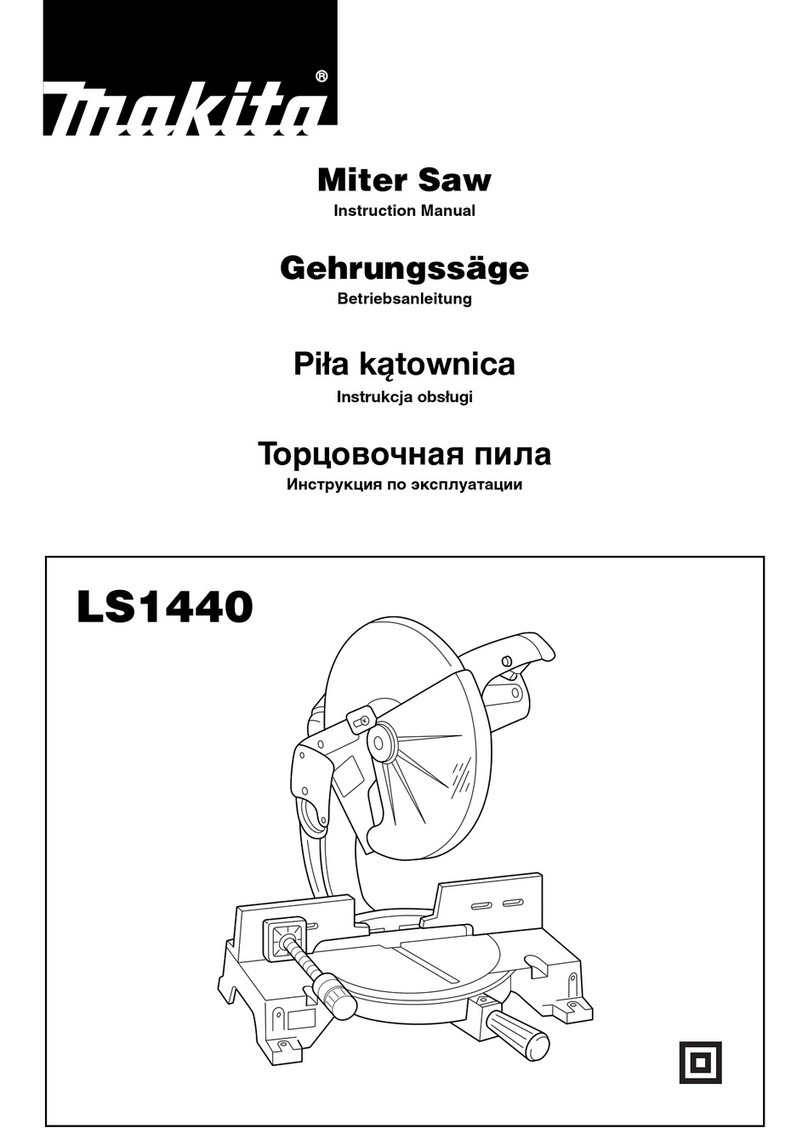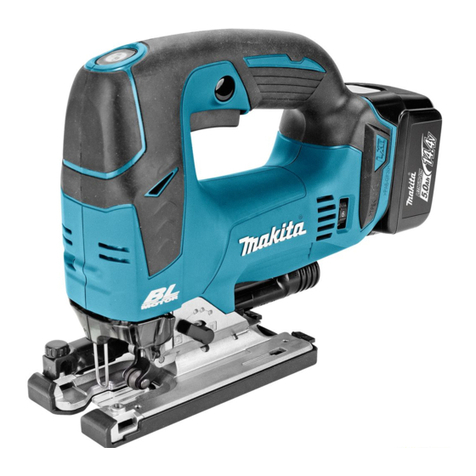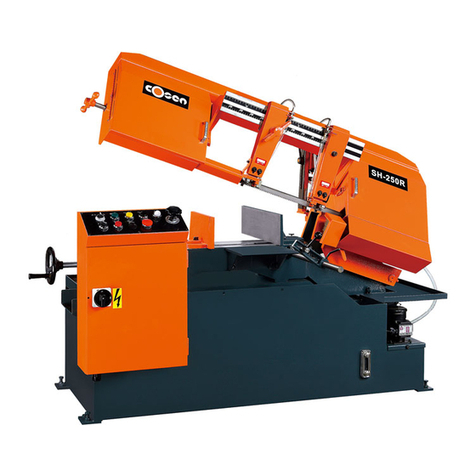
10 ENGLISH
ENGLISH (Original instructions)
SPECIFICATIONS
Model: SP001G
Blade diameter 165 mm
Max. Cutting depth at 0° 56 mm
at 45° bevel 40 mm
at 48° bevel 38 mm
No load speed 2,500 - 4,900 min-1
Overall length (with BL4040) 375 mm
Rated voltage D.C. 36 V - 40 V max
Net weight 4.4 - 5.0 kg
• Duetoourcontinuingprogramofresearchanddevelopment,thespecicationshereinaresubjecttochange
without notice.
• Specicationsandbatterycartridgemaydierfromcountrytocountry.
• Theweightmaydierdependingontheattachment(s),includingthebatterycartridge.Thelightestandheavi-
est combinations, according to EPTA-Procedure 01/2014, are shown in the table.
Applicable battery cartridge and charger
Batterycartridge BL4020/BL4025*/BL4040*/BL4050F*
*:Recommendedbattery
Charger DC40RA / DC40RB / DC40RC
• Someofthebatterycartridgesandchargerslistedabovemaynotbeavailabledependingonyourregionof
residence.
WARNING: Only use the battery cartridges and chargers listed above.Useofanyotherbatterycartridges
andchargersmaycauseinjuryand/orre.
Intended use
Thetoolisspeciallyintendedforperformingplunge
cuts. The tool is also intended for rip and cross cuts in
wood. If the tool is equipped with proper circular saw
blade, the tool can be used for sawing aluminum, plas-
tic, mineral contained plastic, and similar materials.
Noise
ThetypicalA-weightednoiseleveldeterminedaccord-
ing to EN62841-2-5:
Sound pressure level (LpA) : 89 dB(A)
Sound power level (LWA) : 100 dB (A)
Uncertainty(K):3dB(A)
NOTE: The declared noise emission value(s) has
been measured in accordance with a standard test
methodandmaybeusedforcomparingonetoolwith
another.
NOTE: The declared noise emission value(s)
mayalsobeusedinapreliminaryassessmentof
exposure.
WARNING: Wear ear protection.
WARNING:
The noise emission during actual
use of the power tool can dier from the declared
value(s) depending on the ways in which the tool is
used especially what kind of workpiece is processed.
WARNING:
Be sure to identify safety measures
to protect the operator that are based on an estima-
tion of exposure in the actual conditions of use (tak-
ing account of all parts of the operating cycle such
as the times when the tool is switched o and when
it is running idle in addition to the trigger time).
Vibration
The vibration total value (tri-axial vector sum) deter-
mined according to EN62841-2-5:
Work mode: cutting wood
Vibration emission (ah,W) : 2.5 m/s2or less
Uncertainty(K):1.5m/s2
Work mode: cutting metal
Vibration emission (ah,M) : 2.5 m/s2or less
Uncertainty(K):1.5m/s2
NOTE: The declared vibration total value(s) has been
measured in accordance with a standard test method
andmaybeusedforcomparingonetoolwithanother.
NOTE:Thedeclaredvibrationtotalvalue(s)mayalso
beusedinapreliminaryassessmentofexposure.



